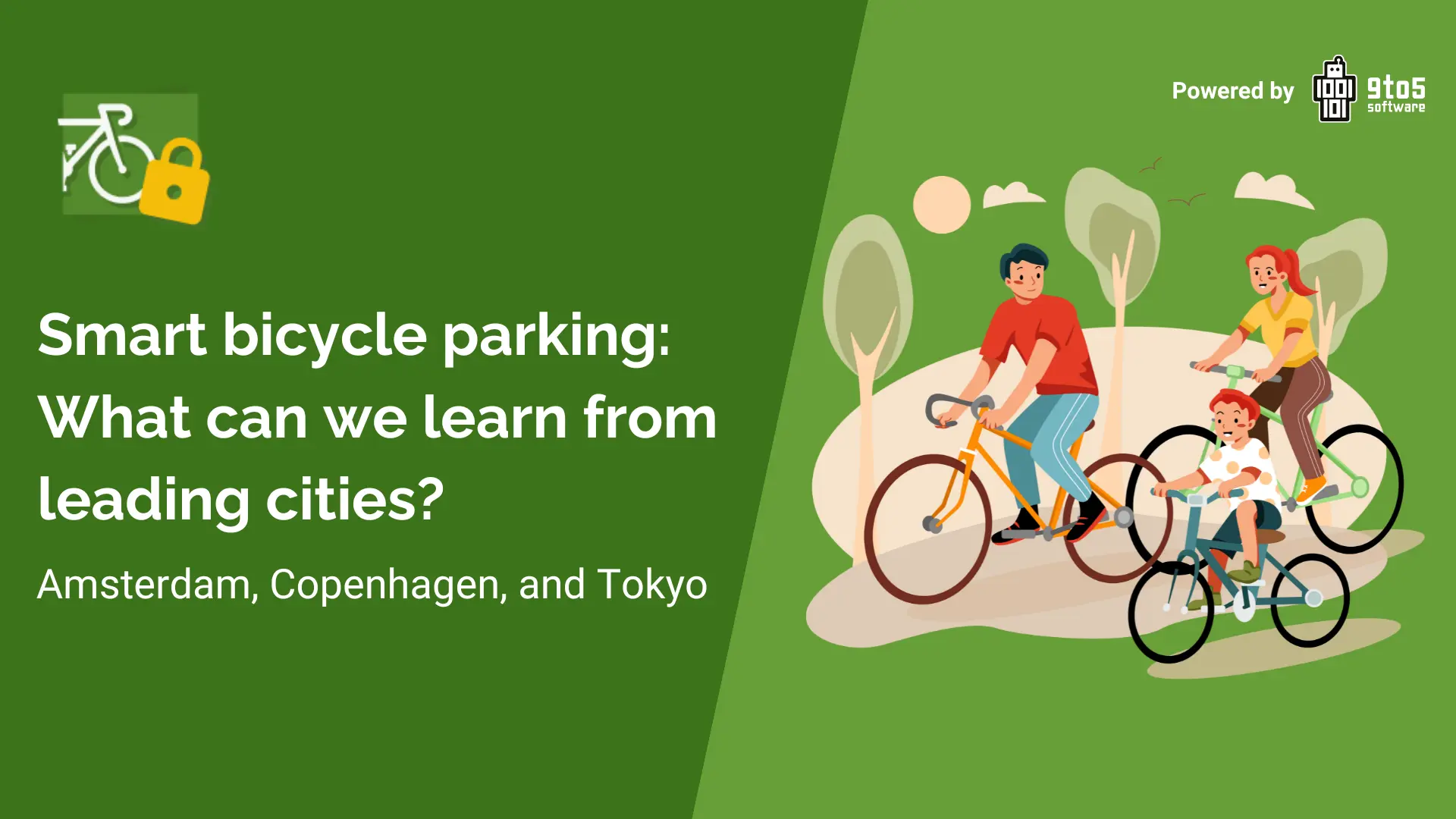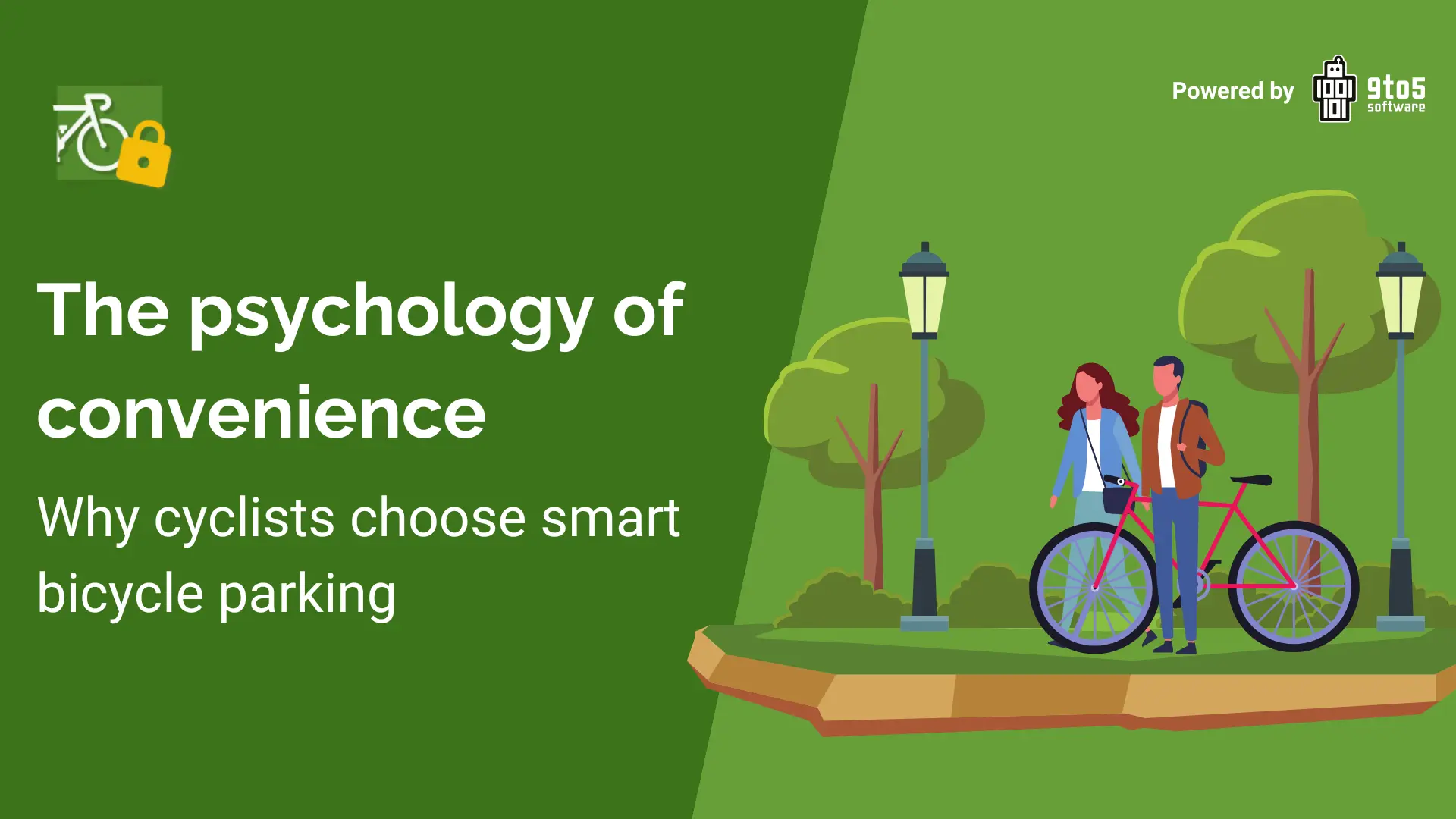Smart bicycle parking: What can we learn from leading cities?
By Julia Greijdanus on September 26, 2024

As urban areas around the world grapple with traffic congestion, pollution, and the need for more sustainable transportation options, cycling has emerged as a vital solution. However, for cycling to be a truly viable option, cities must provide adequate infrastructure - particularly when it comes to bike parking. Across the globe, leading cities have implemented innovative bike parking solutions, each offering unique lessons that other urban centers can learn from.
In this article, we’ll explore global trends in bike parking by looking at some of the world’s most cycling-friendly cities, including Amsterdam, Copenhagen, and Tokyo. These cities not only prioritize cycling in their transportation planning but also offer some of the best examples of how to create effective and efficient bike parking systems.
Amsterdam: the gold standard of smart bike parking
The challenge
Amsterdam is often regarded as the cycling capital of the world, with bikes outnumbering residents by a significant margin. However, this popularity creates challenges, particularly in terms of space. The city’s narrow streets and canals leave little room for expansive bike parking facilities, yet the demand for secure, convenient bike storage is enormous.
The solutions
- Underground and multi-story bike parking garages: Amsterdam has built several large-scale, multi-story bike parking facilities, many of them underground. These garages are strategically located near major transit hubs, making it easy for cyclists to switch between biking and public transportation. For instance, the recently opened facility under Amsterdam Central Station can hold over 7,000 bikes and features state-of-the-art security systems.
- Automated bike parking systems: Amsterdam has also experimented with automated bike parking systems, which allow cyclists to quickly and easily park their bikes using robotic systems that store bikes in vertical racks. This approach maximizes space and provides a seamless parking experience.
- Policy integration: The city’s commitment to cycling is reflected in its policies, which include stringent bike parking regulations for new buildings and public spaces. These regulations ensure that sufficient bike parking is included in urban development plans, preventing the cluttering of public spaces with parked bikes.
Lessons for other cities
- Space optimization: In densely populated urban areas, space is a premium. Other cities can learn from Amsterdam’s use of underground and multi-story facilities, which provide high-capacity parking without taking up valuable surface space.
- Integration with public transit: Amsterdam’s focus on locating bike parking near transit hubs encourages intermodal transport, a key strategy for reducing car dependency.
Copenhagen: integrating cycling with urban life
The challenge
Copenhagen, like Amsterdam, is a city where cycling is deeply ingrained in the culture. With over 40% of residents commuting by bike, the city faces the challenge of providing sufficient bike parking, particularly in areas with high demand, such as city centers and public transport stations.
The solutions
- On-street bike corrals: The city has converted car parking spaces into on-street bike corrals, which are simple racks that provide convenient parking in high-traffic areas. This not only increases bike parking capacity but also sends a strong message about the city’s commitment to cycling over car use.
- Cycle superhighways and parking hubs: Copenhagen’s cycle superhighways are designed for long-distance bike commuters, and at key points along these routes, the city has installed bike parking hubs. These hubs offer secure, well-lit parking and sometimes include additional services such as bike repair stations.
- Focus on safety and security: Copenhagen has invested in secure bike parking options, including lockers and monitored parking areas, to reduce the risk of theft—a key concern for cyclists in any urban environment.
Lessons for other cities
- Prioritizing cycling over cars: Copenhagen’s repurposing of car parking spaces for bike parking is a bold move that other cities can emulate, particularly as they seek to reduce car traffic and promote cycling.
- Safety and security: Ensuring that bike parking facilities are safe and secure is crucial for encouraging more people to cycle. Cities should consider incorporating secure bike parking solutions such as lockers in their urban design.
Tokyo: Managing high demand with high-tech solutions
The challenge
Tokyo is one of the most densely populated cities in the world, with limited space for infrastructure development. Despite this, cycling remains a popular mode of transport, leading to significant demand for bike parking.
The solutions
- Automated underground bike parking systems: Tokyo is famous for its Giken ECO Cycle underground bike parking systems. These fully automated, robotic systems can store hundreds of bikes in a small footprint. Cyclists simply place their bike on a platform, and within seconds, the system stores the bike underground in a secure environment. This solution is ideal for space-constrained urban areas.
- Paid bike parking with added services: Tokyo has also introduced paid bike parking facilities that offer additional services, such as bike rentals, repair shops, and lockers. This approach not only meets the demand for parking but also provides added convenience for cyclists.
- Integration with urban planning: The city’s urban planning includes dedicated bike lanes and clear signage that guide cyclists to parking facilities, ensuring that bike parking is both accessible and well-utilized.
Lessons for other cities
- Embrace technology: Tokyo’s use of automated systems demonstrates how technology can solve space and security challenges in bike parking. Cities facing similar issues should explore high-tech solutions to maximize efficiency.
- Added value services: Offering additional services at bike parking facilities can enhance the user experience and make cycling a more attractive option.
Conclusion: learning from the global leaders
The approaches taken by Amsterdam, Copenhagen, and Tokyo provide valuable insights into smart bike parking solutions. Key takeaways include the importance of space optimization, integration with public transit, prioritizing cycling over cars, and leveraging technology to address challenges.
As cities continue to evolve, the demand for smart bike parking solutions will grow. By learning from these global leaders, urban planners and bike locker providers can develop effective solutions that meet current and future needs, fostering more sustainable, bike-friendly environments.
Discover how ParkMyBike can transform your city
As cities look to improve their bike parking infrastructure, ParkMyBike offers innovative solutions that align with these global trends. Our smart locks for bike lockers and garages, combined with an intuitive app for easy reservations, meet the needs of modern urban mobility. Additionally, our admin dashboard provides streamlined management for these secure parking facilities, ensuring efficiency and reliability. With ParkMyBike, cities and cyclists alike can embrace the future of cycling with confidence, knowing that secure, convenient, and connected parking is just a click away. Learn more at our website.
Other recent blog posts

The psychology of convenience: Why cyclists choose smart bicycle parking
We delve into the psychology behind cyclists' preferences for smart bicycle parking and explore how these solutions can significantly transform commuting experiences.

How IoT is revolutionizing bike lockers: What manufacturers and providers need to know
For bike locker providers and manufacturers, integrating IoT is quickly becoming essential to stay ahead. Curious how these changes could impact your offerings?